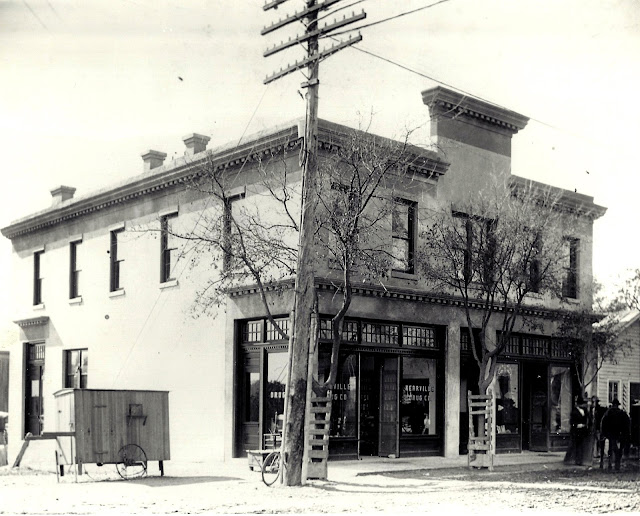 |
| The Scofield School for Girls, around 1910. Photograph courtesy of the Neunhoffer family. |
Overlooking town from a hill south of the river, above Riverhills Automotive Center on highway 173, is an old school building, barely visible from the highway. I hear it's in pretty poor shape now, though I haven't visited the place for a number of years.
But at one time that old building was quite special.
In October 1909, when Miss Sarah Scofield opened her "Scofield School for Girls," it was front-page news. The little town of Kerrville was delighted to have the new school here. The building was new, and the faculty was exceptional. It was a big deal.
Miss Scofield was an educator from San Antonio, and had been the principal of the San Antonio High School. She was a graduate of Mount Holyoke College, class of 1886. She would own the new school in Kerrville, serve as its principal, and also teach history and English.
Joining her were Miss Minette Leichmueller, graduate of the Chicago School of Art, who would teach German and art. Miss Elizabeth Gillmore, graduate of Stanford University, would teach physical culture, mathematics, and natural science. Miss Clara Herzog, graduate of the Cincinnati Conservatory of Music, would teach music and voice culture. The story lists some of her roles with various companies, both in the U.S. and in Europe. Miss Ethel Keller, graduate of the University of Tennessee, would lead the primary department, and also domestic science. Miss Marie Lapton would teach a class of dramatic expression.
The editor of the Kerrville Mountain Sun, J. E. Grinstead, did not spare praise in his story:
"No more worthy enterprise has been inaugurated in Kerrville since its founding than this school. It is not only a source of satisfaction and pride to the people of Kerrville, but is a boon to parents who desire to place their daughters in a high-class, select school for girls, where they have every advantage of study and training that is offered by any school of this class, and at the same time have thrown around them the spirit of wholesome home life."
Earlier in the year he'd written the Scofield School "will meet the requirements of a great number of ranchmen who desire to place their daughters in a school of the first class, but at the same time have them nearby."
Ads for the Scofield School, in the following years, described its mission as "a select school for girls, the purpose of which is to fit young women for their place in life. This school combines healthfulness of location, excellent curriculum, and home training."
I know of one student of the school who is still among us: Clarabelle Snodgrass, the community's premier historian, who attended Scofield School in the 1920s. There may be other former students of the school still living, but I am not aware of any in our area.
In my collection of Kerr County historical items, I have several from the Scofield School: photographs, generously provided by several families, including the Neunhoffer family. I also have the embosser which would apply the school's seal to its diplomas, which a kind lady in another state sent to me -- knowing it should remain here in Kerrville.
It's sad, really, if the old building has fallen into disrepair. During my last visit there it was in decent shape, though it would have taken some money to fully repair the old structure.
And it's especially sad that the school, which one writer considered the most worthy enterprise since the founding of Kerrville, is now mostly forgotten.
Until next week, all the best.
Joe Herring Jr. is a Kerrville native. This column originally appeared in the Kerrville Daily Times July 11, 2015.
I often post historic photographs on my Facebook page. If you'd like to visit that page, here's the link: www.facebook.com/joe.herring





















